Iron and manganese chlorosis is a common problem affecting urban trees, particularly in Chicago's challenging urban environment, which includes soil compaction, heavy clay soils, and pollution. This condition, characterized by the yellowing of leaves due to nutrient deficiencies, can significantly impact the health and appearance of trees in urban landscapes. In this article, we will explore the symptoms, causes, and susceptible tree species, as well as the various prevention and treatment strategies available. We will also discuss the importance of a holistic approach to tree health care and the benefits of maintaining green urban canopies.
Symptoms and Visual Indicators of Iron and Manganese Chlorosis
Visual symptoms indicate the presence of iron and manganese chlorosis in trees. The most apparent sign of this condition is the yellowing of leaves, particularly between the veins, while the veins themselves remain green. This distinctive pattern, known as interveinal chlorosis, is a clear indicator of nutrient deficiencies. As the condition progresses, leaves may become pale, white, or even brown and necrotic. Foliage discoloration is a key symptom of iron and manganese chlorosis.
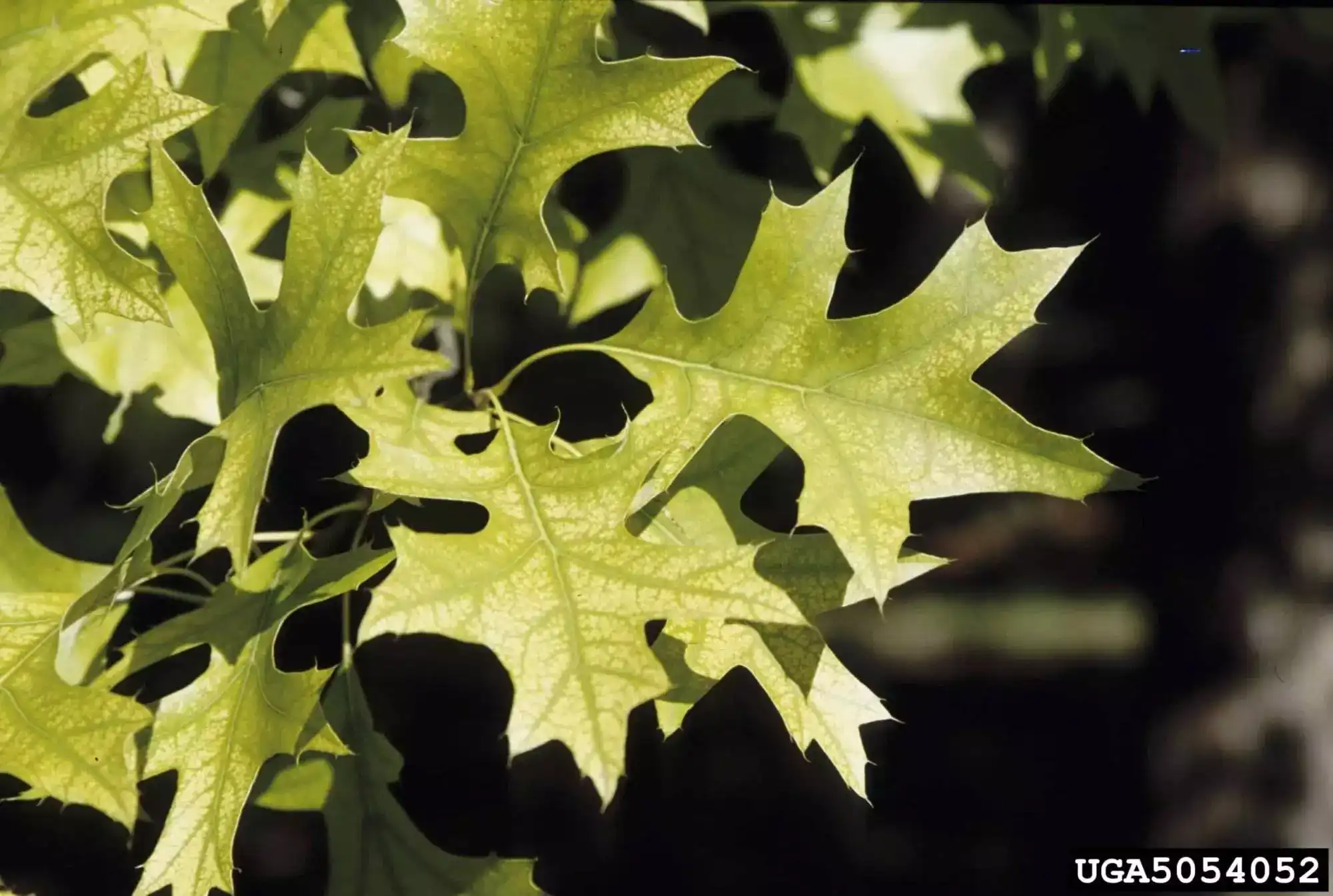
Causes of Iron and Manganese Chlorosis and Local Soil Conditions
Several factors contribute to the development of iron and manganese chlorosis in urban trees, including:
- Soil pH imbalances: When soil pH is too high (alkaline), iron and manganese become less available for plant uptake, leading to deficiencies. However, even trees in optimal pH ranges can suffer from micronutrient deficiencies if the soil lacks these elements.
- Nutrient deficiencies: Urban soils may be inherently lacking in essential micronutrients such as iron, manganese, magnesium, potassium, nitrogen, zinc, and sulfur. Each of these deficiencies can cause specific leaf-yellowing patterns.
- Urban growing conditions: Limited soil volume, poor soil quality, air pollution, and heat stress can all impact a tree's ability to uptake and utilize nutrients effectively.
Chicago soils are often characterized by high clay content, alkaline pH, poor drainage, limited organic matter, and compaction due to urban development. These soil properties contribute to reduced nutrient availability and uptake, making trees more susceptible to chlorosis.
Factors that impact root health and nutrient uptake include:
- Soil compaction
- Poor drainage
- Limited soil volume
- Mechanical damage
- Presence of beneficial microbes
Cultural Causes of Chlorosis
In addition to soil conditions and nutrient deficiencies, cultural factors can also contribute to the development of chlorosis in urban trees:
- Overwatering: Saturated roots cannot breathe properly, leading to poor nutrient uptake and chlorosis.
- Damaged roots: Roots that are damaged by construction, excavation, or lawn maintenance may not be able to absorb enough water, nutrients, and oxygen, causing leaf yellowing.
- Restricted root growth: In urban areas, obstacles like building foundations, streets, and pavements can limit root growth, resulting in shallow roots with limited access to nutrients, water, and air.
- Compacted soils: Compacted soils are difficult for roots to penetrate, leading to poor root development and nutrient uptake.
Tree Species Susceptible to Iron and Manganese Chlorosis
While any tree can suffer from chlorosis under the right conditions, some tree species are more susceptible to the disease, especially in high pH soils. These include:
- Pin oak (Quercus palustris)
- Sweetgum (Liquidambar styraciflua)
- Flowering dogwood (Cornus florida)
- White oak (Quercus alba)
- Silver maple (Acer saccharinum)
- Magnolia (Magnolia spp.)
- Catalpa (Catalpa spp.)
- Tulip tree (Liriodendron tulipifera)
When planting in soils with high pH levels, it is best to avoid these tree species and opt for more tolerant alternatives.
Consequences of Untreated Chlorosis
Leaving chlorosis untreated can have severe consequences for the health and appearance of urban trees:
- Reduced photosynthesis: Yellow leaves cannot perform photosynthesis effectively, leading to a lack of energy production and stunted growth.
- Weakened trees: Trees suffering from chlorosis are weak and more susceptible to other stressors, pests, and diseases.
- Aesthetics: Yellow leaves are an unsightly feature in seasons other than fall, detracting from the beauty of your landscape.
- Potential tree death: If left unattended, chlorosis can ultimately lead to the death of the affected tree.
Progressive Tree Service: Specialized Care for Iron and Manganese Chlorosis
Progressive Tree Service exemplifies a comprehensive approach to tree care in the Chicago area. Our expertise in local arboriculture, combined with a commitment to science-based practices, enables us to effectively manage iron and manganese chlorosis and promote healthy, vibrant urban canopies.
Our services include:
- Customized treatment plans based on tree species, age, soil conditions, and the severity of chlorosis
- Soil amendments, foliar sprays, and micronutrient injections
- Regular monitoring and assessment of tree health
- Proactive risk assessment and prevention measures
- Integrated pest management practices
- Soil pH adjustment techniques
Progressive Tree Service's approach is specifically tailored to address the unique challenges faced by trees in Chicago's urban environment.
Soil Amendment Strategies for Improving Nutrient Availability
Soil amendments can improve nutrient availability and alleviate symptoms of iron and manganese chlorosis in trees. Strategies include:
- Nutrient supplementation: Incorporating iron and manganese-rich fertilizers into the soil around the tree's root zone
- Soil structure improvement: Aerating compacted soils, incorporating organic matter, and improving drainage
- pH adjustment techniques: Applying acidifying amendments like sulfur or iron sulfate to lower soil pH to a more suitable range for micronutrient uptake
Foliar Spray Applications: Targeted Nutrient Delivery for Chlorosis Treatment
Foliar spray applications deliver targeted nutrients directly to the leaves of trees affected by chlorosis. This method provides a quick and efficient way to address nutrient deficiencies, as the nutrients are absorbed through the leaf surface and rapidly transported throughout the tree. Foliar sprays can be particularly effective for treating acute chlorosis symptoms.
Proper timing and frequency of foliar spray applications are essential for effective chlorosis treatment. Treatments are typically applied during the growing season when leaves are actively photosynthesizing. Multiple applications may be necessary, depending on the severity of the chlorosis and the tree's response.
| Foliar Spray Ingredient | Function |
|---|---|
| Iron chelates | Provide a stable and readily available form of iron for leaf absorption |
| Manganese chelates | Supply manganese in a form that can be easily taken up by the tree |
| Wetting agents | Improve the spray's ability to adhere to and penetrate the leaf surface |
| pH buffers | Maintain a suitable pH level for optimal nutrient absorption |
The Importance of a Holistic Approach to Tree Health Care
A holistic approach to tree health care emphasizes preventive maintenance to minimize the risk of chlorosis and other issues. Regular pruning, mulching, and irrigation practices promote overall tree vitality and resilience. By maintaining healthy soil conditions and supporting robust root development, trees are better equipped to withstand stress and nutrient deficiencies.
Consistent monitoring and assessment are key components of a holistic tree health care program. Regularly inspecting trees for signs of chlorosis, pest infestations, or other stressors enables early detection and intervention. This proactive approach allows for timely treatments and management strategies to be implemented before issues escalate.
Micronutrient Injections: Long-Lasting Treatment for Iron and Manganese Chlorosis
Micronutrient injections deliver concentrated doses of iron and manganese directly into the tree's vascular system. This method bypasses the soil and ensures that the nutrients are readily available for the tree's use. Injections can be made into the trunk or root flares, depending on the specific product and application technique used.
Advantages of micronutrient injections include:
- Targeted delivery of nutrients directly to the tree
- Longer-lasting effects compared to foliar sprays
- Reduced environmental impact, as nutrients are not applied to the soil
- Consistent and controlled dosage for optimal results
| Injection Method | Description |
|---|---|
| Trunk injection | Nutrients are injected into the tree's trunk using specialized equipment, allowing for rapid uptake and distribution |
| Root flare injection | Nutrients are injected into the root flares at the base of the tree, promoting absorption through the roots |
Customized Nutrient Management Plans for Chlorosis Prevention and Treatment
Customized nutrient management plans address the specific needs of trees affected by iron and manganese chlorosis. Arborists develop tailored fertilization schedules based on factors such as tree species, soil conditions, and the severity of the deficiency. These plans may include a combination of soil amendments, foliar sprays, and micronutrient injections to provide a comprehensive approach to chlorosis management.
Regular monitoring and adjustments are essential components of effective nutrient management plans. Arborists assess the tree's response to treatments and make necessary modifications to optimize results.
The Importance of Soil Testing in Addressing Iron and Manganese Chlorosis
Soil testing is crucial for identifying nutrient deficiencies and developing targeted treatment strategies. By analyzing soil samples, arborists can determine the levels of iron, manganese, and other essential nutrients present in the soil. This information helps diagnose the underlying causes of chlorosis and guides the selection of appropriate amendments and treatments.
Soil test results inform the application of targeted soil amendments to address iron and manganese deficiencies. Based on the identified nutrient levels and soil properties, arborists can recommend specific amendments, such as iron sulfate, manganese sulfate, or chelated micronutrients, to improve nutrient availability and uptake.
| Soil Test Parameter | Importance |
|---|---|
| pH | Affects nutrient availability and uptake; high pH can lead to iron and manganese deficiencies |
| Organic matter | Influences soil structure, nutrient retention, and microbial activity; low organic matter can exacerbate nutrient deficiencies |
| Cation exchange capacity (CEC) | Measures the soil's ability to hold and exchange nutrients; low CEC can contribute to nutrient deficiencies |
| Iron and manganese levels | Indicates the availability of these micronutrients in the soil; low levels can cause chlorosis |
Proactive Chlorosis Risk Assessment for Urban Trees
Proactive chlorosis risk assessment involves evaluating site conditions to identify potential nutrient deficiency issues. Arborists consider factors such as soil type, drainage, compaction, and proximity to hardscapes or buildings that may impact soil quality and nutrient availability.
Recognizing tree species susceptible to iron and manganese chlorosis is an important aspect of proactive risk assessment. Arborists identify trees with a known predisposition to these nutrient deficiencies, such as pin oaks, red maples, and river birches, and prioritize them for monitoring and preventive care.
Implementing prevention strategies based on risk assessment findings can minimize the occurrence and severity of iron and manganese chlorosis. These strategies may include:
- Selecting tree species well-suited to local soil conditions
- Improving soil quality through amendments and aeration
- Establishing proper irrigation and drainage practices
- Regularly monitoring for early signs of nutrient deficiencies
- Applying preventive treatments, such as foliar sprays or soil supplements
Proper Watering Practices for Chlorosis Prevention and Management
Proper watering practices play a crucial role in preventing and managing chlorosis caused by overwatering or poor drainage. To maintain optimal soil moisture without saturating the roots, consider the following:
- Water slowly and deeply to moisten the soil to the depth of the tree's roots without creating waterlogged conditions.
- Adjust watering frequency based on weather conditions, soil type, and the tree's water requirements.
- Ensure proper drainage to prevent water from accumulating around the tree's base.
- Use mulch to help retain soil moisture and regulate soil temperature.
Integrated Pest Management and Its Role in Reducing Tree Stress
Integrated pest management (IPM) is a holistic approach that helps reduce overall tree stress, leaving trees less vulnerable to the effects of iron and manganese chlorosis. By managing pest populations and preventing infestations, IPM minimizes the additional strain on trees already challenged by nutrient deficiencies.
Soil pH Adjustment Techniques for Optimizing Nutrient Availability
Soil pH adjustment is a critical technique for optimizing nutrient availability, particularly for iron and manganese. In alkaline soils, which are common in urban environments, these micronutrients become less soluble and harder for trees to absorb. Arborists employ various pH adjustment methods:
- Applying sulfur or other acidifying agents to lower soil pH
- Incorporating organic matter to improve soil structure and buffering capacity
- Using pH-specific fertilizers or amendments to target nutrient deficiencies
- Monitoring soil pH regularly to maintain optimal levels
By adjusting soil pH to a more favorable range, arborists can enhance the availability and uptake of iron, manganese, and other essential nutrients, reducing the risk and severity of chlorosis.
Monitoring and Managing Leaf Discoloration Caused by Chlorosis
Monitoring and managing leaf discoloration is essential for effectively addressing iron and manganese chlorosis in urban trees. Arborists regularly assess the extent and progression of leaf yellowing, which can indicate the severity of the nutrient deficiency. They also consider other factors that may contribute to leaf discoloration, such as drought stress, pest damage, or disease.
Based on their observations, arborists develop targeted management strategies to mitigate leaf discoloration and promote healthy foliage. These strategies may include:
- Adjusting fertilization practices to provide necessary nutrients
- Implementing foliar spray treatments for rapid nutrient delivery
- Improving soil conditions to enhance nutrient uptake
- Pruning affected branches to encourage new, healthy growth
- Monitoring the tree's response to treatments and making adjustments as needed
The Benefits of Maintaining Green Urban Canopies
Healthy urban trees contribute to enhanced biodiversity in cities by providing habitat and resources for wildlife. They also play a significant role in improving air quality and regulating the microclimate by absorbing pollutants, filtering particulate matter, providing shade, and reducing the urban heat island effect.
In addition to the environmental benefits, healthy, vibrant trees add immense aesthetic value to urban landscapes. The lush, green canopy created by well-maintained trees enhances the visual appeal of streets, parks, and neighborhoods, making them more inviting and enjoyable for residents and visitors alike.
Effectively addressing iron and manganese chlorosis requires a comprehensive approach that considers the unique challenges of urban environments. By understanding the symptoms, causes, and susceptible tree species, arborists can develop targeted prevention and treatment strategies.
Progressive Tree Service exemplifies this comprehensive approach to tree care in the Chicago area. Our expertise in local arboriculture, combined with a strong commitment to science-based practices, enables us to effectively manage iron and manganese chlorosis and promote healthy, vibrant urban canopies.
By investing in the prevention and treatment of iron and manganese chlorosis, we not only enhance the beauty of our urban landscapes but also support the vital ecological functions and environmental benefits provided by healthy trees. Through the dedicated efforts of skilled arborists and the support of the community, we can ensure that Chicago's urban forest thrives for generations to come.

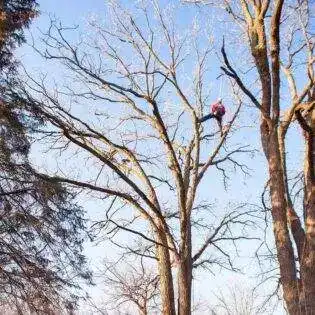
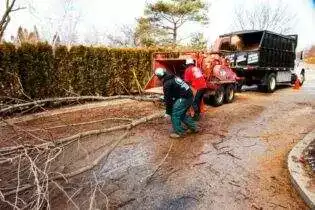
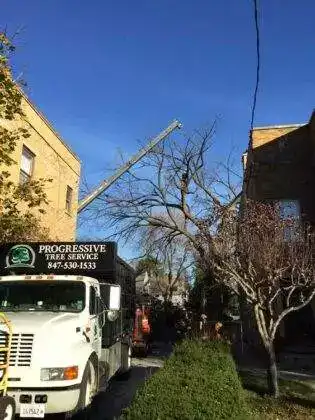
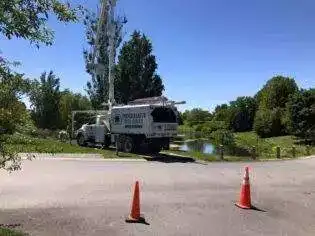

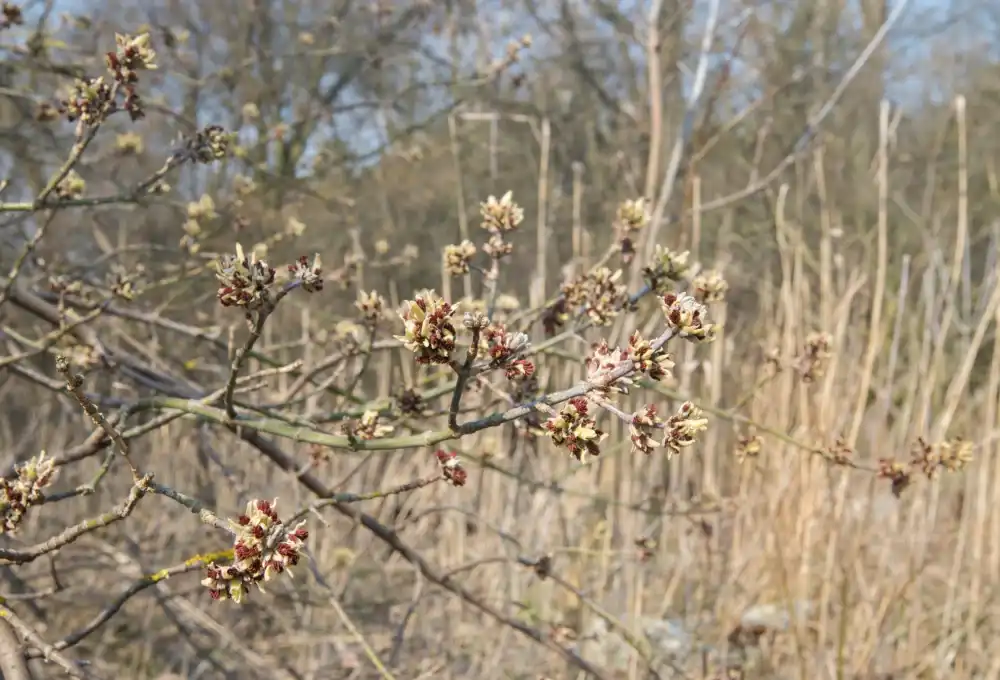
You must be logged in to post a comment.